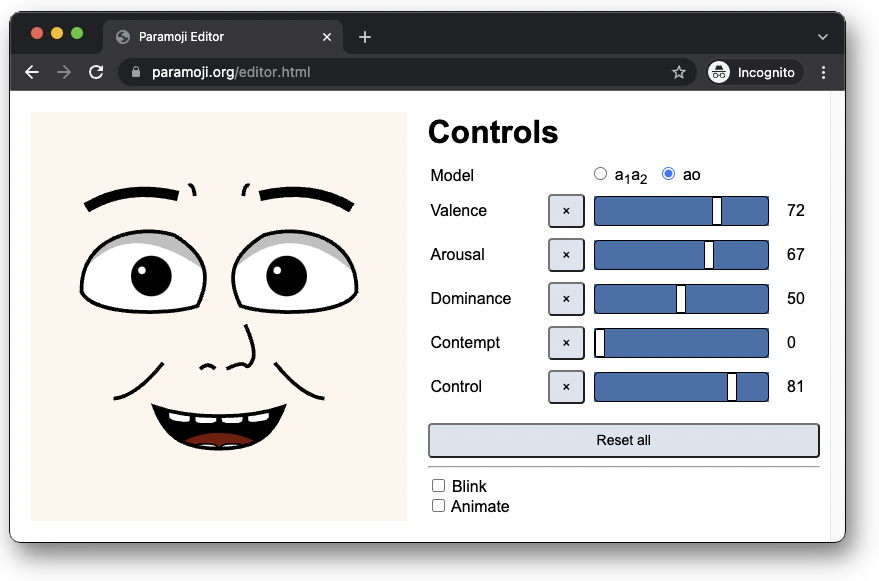
A paramoji is a parametric icon that represents facial expressions on continuous scales. They are similar to Emojis, but instead of being enumerated they are parametric. The expressions are rendered from six parameters that can be freely selected. They can be used to visualize manually selected, automatically detected or computationally generated emotions with accuracy and with arbitrary nuances. The resulting emoji style icons are expressive, exaggerated and playful. Their emotional content can be easily recognized by humans.
Read more about the design principles of paramojis: Visualizing emotions with linearly parameterized facial expressions
How paramojis can translate number into emotions and it combines with LLM outputs.
Paramoji with emotional beats.
Using Paramoji for an explanatory video about sadness.
The paramoji parameterizes facial expressions with a wide variety of emotions. This includes the the seven universal emotions defined by Paul Ekman with reasonable accuracy. Here are the author's picks for those emotions. You can click the image to create your own variations of those expressions. Note that there is not one correct choice, but many ways to change the face along the dimensions of emotional nuances.
The paramoji has an independent component for serveral aspects of human sentiment:
With these dimensions the paramoji is able to express the emotional dimensions of the Circumplex model of affect and the PAD model of emotional states.
The easiest way to link the image directly as shown below.
You can set the request parameters for six paramoji dimensions from 0 to 100.
Optionally you can set the size parameter to get a fixed size image.
With dark=1 can make it fit on dark background.
<img src="https://paramoji.org/The source code is licensed as MIT and can be accessed here:
You can use the paramoji editor to find suitable parameters. To really leverage the power of paramojis these parameters must of course be dynamically derived or computed.
Stefan Dirnstorfer - Helene-Mayer-Ring 10 - Munich